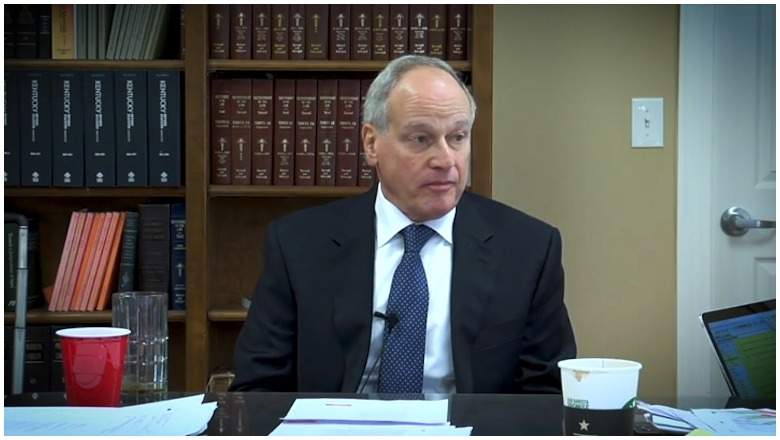
Richard Sackler
Go to Part 1
In 1991, Richard Sackler got his wish, a new company to “take on the risk of new products.” Purdue Pharma, Inc., was born. As with the other Sackler outfits, it was a family affair, led primarily by Mortimer, Raymond, and their respective families. The drug that would become OxyContin had undergone its first clinical trial in 1989, its patent not filed until 1992. The drug was developed under the aegis of Purdue Frederick, but when it went on sale that corporation was to become a holding company, with OxyContin’s marketing and sales divided between Purdue Pharma, Inc., and Purdue Pharma LP, another company the Sacklers established in 1991. PF Laboratories, another Sackler company, was the manufacturer; for the purposes of patent protection and tax mitigation, the Sacklers assigned their intellectual property to their Swiss-based Mundipharma AG.
If the reader is confused at this point, he should be, for this was by design; Richard himself found the indecipherable corporate structure “confusing.” In a 2015 deposition, he appeared to be genuinely unable to recall whether the directors of the various tentacles of the Sackler Leviathan were the same or different. He also did not appear to know, as a factual matter, whether Purdue sales representatives were employed by Purdue Frederick or Purdue Pharma. When asked how many Purdue entities existed, Sackler pled ignorance, and refused even to venture a guess. In fact, Mortimer and Raymond created at least seventy different “Purdue Pharma” entities, often, just as their dearly departed brother had done, using overlapping addresses, phone numbers, and directors.
Purdue spent a cumulative forty million dollars developing and testing its MS Contin successor, by now christened as OxyContin; Raymond had insisted on retaining “Contin” for brand recognition, while “Oxy” signified the active ingredient. In its November 1992 patent application, Purdue presented OxyContin as a breakthrough, primarily based upon its claim that a single dose lasted twelve hours “to control pain in approximately ninety percent of patients.” This twelve-hour claim was, aside from being central to the marketing strategy, the essential differentiating factor that set it apart from rival painkillers. Unbeknownst to the public was the fact that Purdue’s own clinical trials had revealed that OxyContin possessed no therapeutic advantage over other opioids and provided no better relief than generic immediate-release oxycodone. Furthermore, in half a dozen other trials, a third of the subjects had required additional doses after the first. This presented no problem, though, because the FDA required only half of the subjects to get twelve hours of relief. Since 55 percent did, all in all, Purdue was permitted to make the claim.
In 1995, Purdue geared up for what the DEA would almost a quarter of a century later describe as “the most aggressive campaign for an opioid in U.S. history.” The company created a speakers’ bureau, dispatching such “pain management” leaders like Russell Portenoy and J. David Haddox across the country to sing the hymns of the real opium of the masses—opioids. Purdue funneled millions of dollars in grants to patient- and pain-advocacy groups, sponsored over twenty thousand “educational programs,” and underwrote dozens of conferences at which thousands of physicians and pharmacists got all-expense-paid vacations for the privilege of listening to shills heap praise upon the new “revolutionary” “breakthrough” “miracle,” OxyContin. The company established “pain management” curricula at leading universities and medical schools, funding a master’s program at Tufts University and an annual “Sackler Lecture” at the Tufts School of Medicine, to whose board Richard was appointed. When Tufts bestowed Raymond with an honorary degree, its President reverently declared that “it would be impossible to calculate how many lives you have saved.” Queen Elizabeth evidently felt the same way, for she knighted both Raymond and Mortimer. At Massachusetts General Hospital, the largest teaching hospital for Harvard Medical School, the company launched the Purdue Pharma Pain Program, also rolled out at Northeastern University, Boston University, and the Massachusetts College of Pharmacy. Purdue also bankrolled the American Pain Foundation, American Pain Society, and American Academy of Pain Medicine, as well as the Pain and Policy Studies Group at the University of Wisconsin, all of which vehemently advocated for relaxing controls and liberalizing opioid prescription.
In advance of the OxyContin launch, Purdue doubled its sales team, knowing that individual pitches from sales representatives directly to doctors were indispensable to creating a best-selling drug. More importantly, because there was no record of what was said in the doctor’s office, it was impossible for competitors or government regulators to determine if the salesmen adhered to FDA efficacy limits or provided adequate warning about side effects. Sales representatives were extremely careful not to leave any written notes, having been directed from on high to “commit nothing to a permanent record.” Violators were subject to “immediate dismissal.” Purdue also instructed its sales representatives to raise “concerns about addiction” before the physician did, saying that while patients did develop “a normal physiologic response,” “tolerance and physical dependence are not the same as addiction.” Addiction, they claimed, only occurred when a “susceptible individual,” of whom there were only a “small minority” of patients, obtained the drug and ignored dosage instructions. If physicians were still skeptical, they were shown the FDA-approved OxyContin label, which stated that, if used as prescribed, opioid addiction was “very rare.” Very rare, indeed.
To further emphasize the purportedly low addiction potential, representatives employed charts to illustrate the twelve-hour controlled-release that the OxyContin coating supposedly ensured. Purdue held that its patented coating “made it impossible for addicts to get the rush they chased,” and its sales teams maintained that the chance of addiction was “much less than one percent” if said patients are treated by doctors. In that vein, the Purdue-funded American Academy of Pain Medicine and American Pain Society issued a consensus paper reiterating that it was “established” that there was “less than one percent” probability of addiction. One of Purdue’s marketing slogans proclaimed that OxyContin provided “relief—not a ‘high’…[when] taken as directed.”
Of course, there was more to those charts than met the eye—the data minimizing addiction potential had been manipulated quite significantly. Worse still, Purdue’s own clinical trials had demonstrated that, for some patients, up to forty percent of the oxycodone was released into the bloodstream in the first hour or two. This was fast enough to cause a high, and, for many, resulted in a crash that required another dose. To concretize its Big Lie that OxyContin carried with it a “low risk of addiction” and was “non-habit forming,” Purdue financed several studies that reported addiction rates from long-term opioid usage between only 0.2 and 3.27 percent; as late as 2019, David Sackler, Richard’s son, maintained that the OxyContin addiction rate was “somewhere between two and three percent.”
In at least one instance, a Purdue employee did broach the great taboo, suggesting that those studies were marred by flawed methodologies. A superior rejected the concern, stating that “defeatist” questions would not be tolerated. The employee was right; later studies which were not funded by the Sacklers did indeed reveal addiction rates that ranged from 32 to 80 percent. Of course, there were also major problems in the FDA’s randomized controlled OxyContin trials. Those in the control group had previously taken the drug in the earlier open-label phase of the trial, done to exclude from the trial those who cannot tolerate the drug. In this type of trial, there is a ‘washout’ period between the two phases, in which the drug is supposed to wash out of the patients’ systems. As Anne Case and Angus Deaton explain, “the danger in the case of OxyContin, or any addictive drug, is that if the washout period is not long enough, some of those in the control group, no longer receiving the drug, may suffer withdrawal symptoms, which would make them look bad relative to those who go into the treatment group and receive it again. Moreover, the exclusion of those who, in the earlier, open-label phase, could not tolerate the drug means that the trial understates the rate of problems in the wider population for which the drug will be prescribed.” Case and Deaton also raise the more general point that “a testing and approval process that looks only at what these drugs do for individuals ignores the broader effects of releasing a powerful and highly addictive drug into society,” and that “a system that does not consider the public health consequences of approving the drug is surely inexcusable.”
Taking a page from Arthur Sackler’s Hoffmann-La Roche playbook, Purdue developed its own simplified pain rating scale, a sheet of facial expressions that ranged from happy to sad, and distributed tens of thousands of them to physicians. Simultaneously, Purdue used Arthur and his pal Ludwig Fröhlich’s creation, International Marketing Service, or IMS, to obtain a massive quantity of national prescription data; incidentally, the American Medical Association had licensed its “Physician Masterfile” to IMS. With this service, Purdue purchased lists of “core dispensers” sorted by zip code, those doctors who were known to be heavy prescribers of existing painkillers like Vicodin and Percocet; in other words, the people who, Purdue believed, “could be influenced to increase opioid prescriptions the most.” Later, Purdue ramped up its sales campaign even further by purchasing IMS’ Cornerstone 3.0 software, which allowed Purdue to track prescriptions in real-time. On one of the drug firm’s websites, it placed a “find a local pain specialist” widget, utilizing IMS data to connect visitors directly to physicians known to be heavy opioid prescribers. Aside from identifying and then targeting the physicians most likely to dole out OxyContin like candy, who else did Purdue place under its gaze?
First, Purdue targeted the elderly, focusing initially on nursing homes and long-term care facilities, touting “quality of life” and fictitious off-label osteoarthritis applications. The corporation made no mention of the numerous studies demonstrating that opioid painkillers actually increased the risks of falls and bone fractures. Next, Purdue aimed its sights on military veterans, having accumulated evidence that chronic pain was one of the most common complaints at VA hospitals, with the Department of Veterans Affairs confirming that over sixty percent of returning veterans of the Jewish “War on Terror” in the Middle East were afflicted. The company distributed pamphlets and other publications specifically for veterans, and contracted with a decorated Iraq veteran, Derek McGinnis, for a book urging veterans to ask their physicians for opioids and lobby reluctant prescribers. McGinnis assured his readers, already victimized by their service to Zion in the Jewish mercenary force known as the American military, that opioids were not addictive unless one was “predisposed” to addiction, whatever that means. Within Purdue, there were discussions over the possibility that high rates of substance abuse among combat veterans might make them more vulnerable, but the Sacklers pressed onwards anyway. Such thinking smacked of defeatism. Ultimately, veterans did prove to have a higher addiction rate than other classes of OxyContin users. Veterans were also twice as likely as the national average to have their lives stolen by fatal overdose.
However, as aforementioned, Purdue’s greatest target was Everyman, the population that it referred to as the “opioid naïve,” or OVS, “opioid virgins,” those who had never used opioids. The company, which, we cannot overstate, was indivisible and inseparable from the Sackler family, prepared hundreds of thousands of brochures suggesting the efficacy of OxyContin in treating a litany of unapproved, off-label conditions, such as backaches, migraines, sore knees, and tooth extractions. Purdue created the OxyContin Physicians Television Network, an online video service on which paid consultants promoted the drug, and put hundreds of friendly physicians on the payroll to travel the country and spread the Gospel of Opioids through such means as half-day courses aimed at general practitioners, or “family doctors.” The Sacklers set up a website, “In the Face of Pain,” aimed at healthcare professionals. The site featured eleven advocates who disguised OxyContin advertising as unbiased expert testimonials, concealing the fact that Purdue had paid them a quarter of a million dollars for their “objective” opinions. Another website, “Partners in Pain,” performed much the same deception, passing off bald-faced product promotion as public service announcements. This site promulgated Purdue’s Pain Assessment Scale, along with the claim that pure opioid agonists such as oxycodone, morphine, heroin, and fentanyl had “no ceiling dose,” or, in other words, that a patient will always get additional pain relief from additional dosages. For its part, Purdue simply concealed the unfortunate truth that increased dosage meant increased risk of death by overdose, and internal files reveal that the company well understood that this would be misinterpreted to mean that opioids were safe at high doses.
Purdue Pharma also employed Arthur’s saturation tactics, churning out brochures, newsletters, magazine inserts, direct mailings to physicians, and medical journal advertisements on an industrial scale. The company also sponsored a plethora of medical school programs, and distributed millions of dollars of Purdue and OxyContin-branded “swag” to doctors, hospitals, nursing homes, and pain clinics, such as luggage tags, baseball caps, sweatshirts, notepads, pens, heat-activated coffee mugs, and stuffed animals for children. Gerald Posner found some of these items, including a pedometer stamped, “OxyContin—A Step in the Right Direction,” and a CD, “Swing in the Right Direction with OxyContin,” featuring a joyous couple dancing over the OxyContin logo.
These items may seem irrelevant, but, given what we have thus far established regarding the Sacklers, would they take a single breath without knowing, with certainty, that it would reap them some form of material gain? Of course not. One study in New York found that, for every dollar in gifts given to a doctor, at least ten dollars of additional opioids were prescribed. It should, then, come as no surprise to learn that the top one percent of OxyContin prescribers received around eighty percent of the promotional incentivization money spent by Purdue. One week before the official launch of OxyContin and the White Plague, the Purdue shills Russell Portenoy and Ronald Kanner published Pain Management: Theory and Practice, a book in which the authors and a dozen other physicians methodically dismissed concerns about opioid addiction as uneducated “stigma.” Following suit, the American Pain Society, another Sackler mouthpiece, released a pamphlet that declared that suicide rates would crater if opioids were dispensed much more freely. The more you know.
On the last day of May 1996, Purdue issued a press release announcing OxyContin to the world. Titled “New Hope for Millions of Americans Suffering from Persistent Pain,” the statement heralded OxyContin as a catchall “magic bullet,” applicable to a vast array of pains, with a virtually nonexistent probability of addiction. At the OxyContin launch party, Richard Sackler asked the audience to imagine a series of natural disasters: an earthquake, a volcanic eruption, a hurricane, and a blizzard. Lingering on the blizzard, Sackler declared that “the launch of OxyContin tablets will be followed by a blizzard of prescriptions that will bury the competition. The prescription blizzard will be so deep, dense, and white.” As we now know, this was no metaphor.
Satan got to work immediately. While most drug firms paid sales representatives based on the number of prescriptions written by the physicians they had visited, Purdue paid its salesmen based on the dollar amount of the prescriptions dispensed by those doctors, trackable in real-time with the IMS Cornerstone 3.0 software. In high-volume States, Purdue representatives visited each “core dispenser” at least two hundred times per year, sometimes calling on doctors every day. The cost of each individualized sales visit to Purdue was roughly two hundred dollars, translating into forty thousand dollars for each top-tier doctor, an amount that added up to millions. These sales visits functioned as direct bribes to entice doctors into putting greater and greater numbers of patients on opioids, at ever-increasing dosages, for longer and longer periods of time. As an added incentive to drive OxyContin sales, Purdue offered exorbitant bonuses that were capable of doubling a sales representative’s salary. In one internal memo of many, the company assured top performers that “a pot of gold awaits you ‘Over the Rainbow.’” Another memo was titled, “$$$$$$$$$$$$$ It’s Bonus Time in the Neighborhood!”
It wasn’t long before Purdue’s drug pushers realized that they could maximize their earnings potential by selling the highest doses of OxyContin; originally, the pill was available in 10, 20, and 40 milligrams, followed by 80 the next month, and, later on, 30, 60, and the since-discontinued 160. Though the price of each increasing dose was exponentially inflated, Purdue’s manufacturing costs remained unchanged at every dosage. To help its salesmen along, Purdue initiated the “Individualize the Dose” campaign, instructing its representatives to tell physicians that its studies had shown that instead of starting patients on low strengths, they should start at medium to high doses, so that “the drug would relieve pain faster and allow the patient to stop using it quicker.” In the event that a doctor reported that he was dispensing OxyContin three or four times per day because his patients were not getting the promised twelve hours of pain relief, Purdue’s dealers assured that higher doses would make the drug last longer. They guaranteed physicians that those higher doses could even be prescribed to people who had never used opioids, all without adverse effects, reiterating that the higher dosages carried no elevated risk of addiction. Company documents would later reveal that Purdue knew full well that stronger doses did increase addiction potential, as well as the likelihood of lethal respiratory suppression. And, while its press releases asserted that “dose was not a risk factor for opioid overdose,” internal Purdue communications are full of references to the dangers of “dose-related overdose.”
In tandem with its campaign to hook patients on ever-increasing dosages of OxyContin, Purdue persuaded doctors to keep their patients on the opioid for ever-longer periods, which in turn secured ever-higher profits. Internal correspondence would eventually reveal that the Sacklers knew that patients were 30 times more likely to die of overdose if on OxyContin for three months, 46 times more likely to die after six to eleven months, and 51 times more likely to die if they remained on OxyContin for more than a year. Purdue, having discovered that “more patients remain on OxyContin after ninety days,” introduced a “savings card” that encouraged patients to try the drug, offering a substantial discount on their first prescription. For each million dollars spent on these giveaways, the unwitting patients who tried the drug and stayed on it brought in well over four million dollars in additional sales. The FDA was nowhere to be found. The most charitable explanation that we can entertain is that the office charged with promotional oversight was understaffed and overwhelmed, though this seems extraordinarily generous under the circumstances.
In the year of OxyContin’s birth, Purdue hired J. David Haddox, the opiate zealot, as the drug’s public face. Haddox represented the painkiller, a misnomer if ever there was one, at medical conferences and training courses, assuring doctors that the “exquisitely rare” risk of addiction was only “one-half of one percent.” Most of the charlatan’s audiences were comprised of general practitioners who, unfamiliar with the opioid reevaluation movement, saw his presentations as novel and persuasive. Some Purdue sales representatives indicated their uncertainty as to how they should handle instances in which physicians raised the possibility that their patients were addicted, to which Haddox simply peddled his old “pseudoaddiction” snake oil. How could a doctor “treat” this odious malady? According to Haddox, what those doctors mistook for addiction was merely evidence of severe pain and failed treatments, an evil that could only be remedied by eliminating the underlying pain. In other words, when physicians noticed a patient displaying signs of opioid dependence, they had to not only keep their patient on OxyContin, but also increase their dose. If a physician was still hesitant to double the dose, he was told to maintain the original dosage, but increase its frequency.
One of the most verboten topics at Purdue was what might happen if someone scraped off the patented OxyContin coating or crushed the pill. The company knew the answer, its own tests having demonstrated that when the extended-release shell was bypassed, about seventy percent of the oxycodone, as opposed to the time-released ten percent, went straight to the brain and produced a euphoria that rivaled heroin. The FDA thought that the issue was successfully handled with the all-caps warning label that it had required Purdue to place on the OxyContin prescription insert: “TABLETS ARE TO BE SWALLOWED WHOLE, AND ARE NOT TO BE BROKEN, CHEWED, OR CRUSHED. TAKING BROKEN, CHEWED, OR CRUSHED TABLETS COULD LEAD TO THE RAPID RELEASE AND ABSORPTION OF A POTENTIALLY TOXIC DOSE OF OXYCODONE.” It took another twenty years for the Centers for Disease Control to determine that this was a fatal design flaw. With no supporting studies or empirical evidence to speak of, the FDA allowed Purdue to claim that its delayed-absorption coating “was believed to reduce the abuse liability,” taking on faith Purdue’s assertion that drug addicts would only seek immediate-release painkillers. In private communications, the Sacklers acknowledged that this particular claim was their “principal selling tool.”
OxyContin detonated even more successfully than the Sacklers could have hoped. In its first year alone, the painkiller was prescribed half a million times for non-cancer-related pain, out of a total of 920,000. By 2002, prescriptions had metastasized to 7.2 million, with only one million prescribed for cancer-related pain; half of the prescribing physicians were general practitioners, or “family doctors.” In its second full year, OxyContin was responsible for over eighty percent of Purdue’s profits—more than double what the top year for MS Contin had been. From 1996 to 2000, sales climbed from 48 million to 1.1 billion dollars, Purdue’s first entry into the elite billion-dollar club. By 2000, Purdue sales representatives were reaping over forty million dollars in bonuses. In 1997, the FDA gave the Sacklers another gift by lifting the ban on direct-to-consumer advertising; for perspective, we should note that only America and New Zealand permit that practice. This is the same year in which Curtis Wright, the FDA official who had overseen the approval of OxyContin, left his government post to join Purdue Pharma.
As Gerald Posner notes, Purdue very specifically “targeted poverty-scarred working-class Whites in rural America as a prime market.” The Appalachian and Southern regions most afflicted by the White Plague did and do indeed suffer from rampant poverty, up to twenty percent unemployment, and chronic pain from strenuous lives of hard labor. While the Sacklers and their Purdue executives knew about the earliest reports of OxyContin abuse in 1997, the first media reports of OxyContin-fueled drug arrests, pharmacy robberies, and overdose deaths did not appear until 1999. Even then, it was only the shoestring newspapers in a handful of rural towns who sounded the alarm; thus, the problem appeared to all disinterested observers to be confined to a dozen or so counties in a few states. In 1998, the Department of Health and Human Services “Drug Abuse Warning Network” reported a 93 percent rise in “oxycodone mentions,” but this was dismissed as a cyclical spike that occurred any time a new drug was introduced to the market. Nobody saw that spike for the awful portent, the harbinger of doom, that it was. Damningly, 75 percent of the four hundred million dollars spent promoting OxyContin came after Purdue executives first learned of its heavy abuse.
Perhaps the first federal official to publicly raise concerns over OxyContin was Jay McCloskey, then the U.S. Attorney for Maine. McCloskey harbored suspicions that Purdue and its distributors were illegally diverting their opioid drug to the black market, especially given the fact that there had been illegal diversion issues with MS Contin. Purdue, of course, denied the allegations at a conference of state and federal law enforcement officials that McCloskey organized. Despite these concerns, the FDA approved a new 160-milligram dose of OxyContin in 2000, produced ostensibly for a small percentage of patients who had developed tolerance to lower doses in long-term treatment. Purdue intensified its marketing campaign, saturating medical journals, trade shows, and online videos to promote OxyContin for a wide range of musculoskeletal and postsurgical pain, including knee replacements, tendon repairs, and lower back surgeries. Later studies would reveal that patients who used opioids after surgery were twice as likely as the general population to develop opioid addiction.
In 2001, a New York Times story raised concerns about OxyContin, as did Joseph Famularo, then the U.S. Attorney for the Eastern District of Kentucky. J. David Haddox, Purdue’s resident propagandist, was quoted in the Times article warning that “inflammatory statements” might cause doctors to withhold the drug from suffering patients. Richard Sackler breathed a sigh of relief after the article ran, noting that it “could have been far worse.” Sackler, of course, still could not abide the negative press. In an internal memo circulated just after the first Times story, the Jewish scion wrote that “we have to hammer on the abusers in every way possible. They are the culprits and the problem. They are reckless criminals.” Purdue sales representatives were instructed to aggressively emphasize that “patients were to blame for abuse and addiction, not the drug.” Later the same year, the Department of Justice National Drug Intelligence Center issued its first systemwide Information Bulletin stating that OxyContin diversion and abuse was a major issue, acknowledging that addicts were substituting it with heroin. Shortly thereafter, another New York Times article quoted a Drug Enforcement Agency official who said that “no other prescription drug in the last twenty years had been illegally abused by so many people so soon after it appeared.” Not helping matters was the fact that Medicare and Medicaid covered OxyContin, as did private insurance plans for the huge number of miners and construction workers in the States hit earliest. At a street price of a dollar per milligram, a price that still holds to this day, a Medicaid patient who paid three dollars for one prescription of a hundred 80 milligram pills could earn eight thousand dollars, a third of what the average person earned annually in West Virginia and Kentucky.
The DEA Office of Diversion Control opened an investigation into illegal diversion at Purdue’s plant, PF Laboratories in Totowa, New Jersey. Some of the plant’s employees were arrested, a number of whom went on to sue Purdue, charging that plant supervisors had ordered them both to bypass security protocols that required all batches to remain in sight on the production line, and to report fake numbers to cover up missing inventory. The first private lawsuits against Purdue were filed in Ohio, Kentucky, Virginia, and West Virginia, correctly alleging that addictions and overdoses were the result of OxyContin overprescription, and that overprescription was the direct result of Purdue’s deceptive marketing. The DEA investigation did not proceed any further than the one plant, and the lawsuits were dead in the water. If either or both of these early actions against the Sacklers had turned out differently, perhaps it would not have been true that by 2009, 81 percent of the world’s oxycodone and 99 percent of the world’s hydrocodone were consumed in the United States.
In the summer of 2001, the FDA ordered the addition of a black box warning to the OxyContin label that merely reiterated what physicians already knew, that OxyContin was “a Schedule II controlled substance with an abuse liability similar to morphine.” The FDA also expunged the extraordinary sentence, “Delayed absorption as provided by OxyContin tablets is believed to reduce the abuse liability of a drug.” While the original label declared that “iatrogenic addiction is rare,” the FDA altered it to read that addiction in “managed patients with pain has been reported to be rare,” a minor and essentially worthless change that ignored recent studies which concluded that addiction potential was “moderate to high.” Finally, the original label had proclaimed that OxyContin was for “constant, moderate-to-severe pain that is expected to last a long time,” which the FDA revised to state that it was “for the management of moderate to severe pain when a continuous, around the clock analgesic is needed for an extended period of time.” This last “revision” fit the Purdue strategy of profit maximization by persuading physicians to dispense OxyContin for longer periods at ever-higher doses, “around the clock” creating a self-fulfilling spiral of tolerance and addiction. The Sacklers were ecstatic, writing in one Purdue memo that the FDA action “has created enormous opportunities.” Sales tripled over the next three years.
The Sacklers sent Purdue executives Michael Friedman, Howard Udell, and Paul Goldenheim to testify before the House Subcommittee on Oversight and Investigations, utilizing their time as an infomercial and reminding the panel that, “while all of the voices in this debate are important, we must be especially careful to listen to the voices of patients who, without drugs like OxyContin, would be left suffering from their untreated or inadequately treated pain.” By winter 2001, negative press continued to mount. Asa Hutchinson, the DEA Administrator at the time, publicly blamed Purdue’s aggressive marketing blitzkrieg for making OxyContin a drug of “disproportionate abuse.” The same trio of Jews was dispatched to make Hutchinson’s remarks go away. Purdue, as always, was successful. By year’s end, OxyContin had become the top-selling brand-name controlled substance drug ever, a title it still holds today.
Purdue sales representatives well understood that their first priority was to push as many pills as possible. They focused their efforts on “high value target” prescribers, internally listed as “SP,” for “super prescribers.” In OxyContin’s top thirteen markets, a few hundred super prescribers wrote more prescriptions than there were people. Nationally, 55 percent of all opioids were prescribed by three percent of all physicians. Purdue maintained records on the sales territories where it suspected that illegal dispensing contributed to wildly disproportionate sales volumes, referring to the areas as “Region Zero.” The company never once tipped off law enforcement. For example, one West Virginia doctor wrote 335,000 prescriptions over eight years, a rate of 130 a day, seven days a week, while Purdue’s star prescriber in Massachusetts wrote 347,000 in just five years. Purdue awarded both of these doctors lucrative speaking contracts at sponsored pain symposiums, along with many other “super prescribers,” some of whom went on to lose their licenses or go to prison. Purdue employees who raised concerns were shut down immediately and told to get back to selling drugs. And sell drugs, they did. Indeed, they did so with some OxyContin sales teams pressing dubious doctors to continue writing prescriptions for addicts who had been turned away elsewhere.
Many of Purdue’s “super prescribers” were pill mills, cash-only only “clinics” where “doctors” prescribed opioids to anyone for any reason. One of the earliest pill mills operated in Myrtle Beach, South Carolina. In a scenario repeated hundreds of times for the next twenty years, pharmacists had alerted Purdue to this pill mill in 1998, but Purdue took no action, despite knowing that its volume of sales was inexplicable given the local population size and that sales at this “clinic” surged over a million dollars in the first quarter of 2001 alone; at the time it was the largest OxyContin revenue increase anywhere. In December 2001, the “clinic” was raided and shuttered. Throughout its lifetime, the three Purdue salesmen responsible for the pill mill continued to collect bonuses based on the OxyContin they funneled into it; later, Purdue would assert that it was under no legal obligation to alert law enforcement to anything. In 2002, amidst growing attention from Congress and the DEA, the latter agency’s Office of Diversion Control organized a summit between itself, the FDA, and Purdue. At the summit, the DEA’s senior scientific officer presented damning evidence regarding mounting overdose deaths, many of which had been officially classified as suicides. Interestingly, 98 percent of the dead had taken the drug orally, as approved and intended. The DEA thus rightly concluded that its overdose statistics were nowhere near an accurate approximation of the scale of the issue; chronic abusers, it surmised, would have developed tolerances making death by oral ingestion far less likely, meaning that addicts were driving the illicit trade. The VA reported that at least a quarter of its patients treated with OxyContin became addicted, and primary care physicians across the nation reported that at least a third of their OxyContin-prescribed patients ended up dependent.
The result of this summit? The FDA sided with Purdue and against the DEA on every point. The DEA took its findings to the press and was essentially ignored, with the by now familiar New England Journal of Medicine rejecting the DEA report as “too alarmist,” continuing that it “was too early in post-marketing surveillance to make claims of risks and hazards.” One man did take notice, however: John Brownlee, then the U.S. Attorney for the Western District of Virginia. In 2002, Raymond Sackler retained the just-retired Mayor of New York, Rudy Giuliani, to neutralize Brownlee’s investigation. Giuliani Partners, the former Mayor’s new firm, was put on the Sackler payroll to the tune of millions of dollars per month. Giuliani and his former Police Commissioner, Bernard Kerik, who would soon serve as the Interior Minister of Iraq under the Jewish Paul Bremer regime, got to work immediately. Giuliani set up a meeting with DEA Administrator Asa Hutchinson, and, a week before the first anniversary of 9/11, Giuliani joined Hutchinson and United States Attorney General John Ashcroft to give the opening address for a DEA exhibit on terrorism and drug trafficking, raising twenty thousand dollars for the Drug Enforcement Museum Foundation. Purdue did not stop at Giuliani; the Sacklers also retained Louis Sullivan, George H.W. Bush’s Secretary of Health and Human Services, along with Jay McCloskey, the former U.S. Attorney who had been one of the first federal law enforcement officials to publicly oppose Purdue.
In response to another investigation, this time by Florida’s Attorney General, the Sacklers hired Burt Rosen, an extremely well-connected pharmaceutical lobbyist, as Vice President of Federal Governmental Affairs. Giuliani managed to settle this investigation with an agreement for Purdue to pay two million dollars to develop a “prescription monitoring program” that never came to fruition. Moreover, the State of Florida eventually repaid that money to Purdue. Over the next decade, its proliferation of pill mills gave Florida’s Broward County the moniker of “the Oxy Express.” There, over one thousand “clinics” sold more OxyContin than any other county in America; at its peak, Broward County pharmacies dispensed 89 percent of all of the OxyContin in the country. In 2011, the New York Times concluded that this was made possible “because of the absence of a widely used prescription drug monitoring system”—the very monitoring system that Purdue had promised to establish.
In 2002 Senate hearings, Connecticut Senator Christopher Dodd stepped in to shield Purdue when the questioning became too heated, much like fictional Nevada Senator Pat Geary flacked for Michael Corleone during his Senate hearings in The Godfather Part II. That year, Purdue contributed more money to Senator Dodd than any other politician. Despite the DEA Office of Diversion Control having proven that there was pervasive malfeasance at Purdue’s OxyContin plant, Rudy Giuliani managed to ensure that the company only faced a minor civil penalty of two million dollars, less than a day’s revenue at a time when OxyContin was well on its way to two billion dollars in annual sales, up twentyfold from its first year. The Sacklers were on Cloud Nine, for, in addition to Giuliani’s skullduggery, the vast majority of the more than one hundred private lawsuits against Purdue had by now been dismissed. Soon, though, the Sacklers would mess with the wrong mother.
In April 2002, 29-year-old single mother Jill Skolek overdosed on OxyContin and died. Her six-year-old son had come home from school, only to find that, for the first time, his mother was not waiting for him at the bus stop. When he got home, he discovered his mother in bed, in what he presumed to be a dead sleep. He made himself a snack, watched cartoons, and then crawled in bed beside her and fell asleep. The next morning, when he found that she was still sleeping, he shook her to no avail, crying, “Mommy.” Finally, he called the police. She had been dead for a full day. Jill’s mother, Marianne Skolek, was a nurse. Marianne was shocked, because she knew that her daughter’s only physical problem was a herniated disk from lifting furniture the prior year. One morning, a week after the funeral, Jill’s orphaned son told his grandmother that “Mommy changed … after taking that pill.” He clarified that the “oxy” had made her back feel better, and, sure enough, the toxicology report concluded that Jill had died of accidental OxyContin overdose. Marianne vowed to get to the bottom of what had happened, and started a grassroots campaign against Purdue and the Sackler family, penning reams of letters to the FDA. The next January, the FDA issued a “warning letter” to Purdue, having compiled enough evidence of misconduct to hold a false advertising hearing, which, if successful, would have allowed the FDA to punish Purdue with labeling and refill restrictions. Giuliani worked his magic again and made it go away, Purdue’s only penalty: a promise not to do it again.
At a conference at Columbia University’s National Center for Addiction and Substance Abuse, at which J. David Haddox and the Connecticut Jew and now-U.S. Senator Richard “Da Nang Dick” Blumenthal were panelists, Marianne body-blocked Haddox and sent him crashing into a row of folding chairs, saying, “Now you know how the victims of OxyContin feel when they hit the depths of addiction and are on their knees fighting the horrific effects of withdrawal.” Robin Hogen, Purdue’s Vice President of Public Affairs and de facto spokesperson, suggested that Marianne’s dead daughter had been an addict, saying that “we think she abused drugs.” Hogen thus planted the seed of doubt, just as Purdue had in dozens of lawsuits that it got dismissed by aggressively putting the victims on trial as addicts who had “latched on to the painkiller to satisfy their drug habits.” Talk about blaming the victim. When Marianne learned that Purdue had asked for FDA approval of OxyContin for breastfeeding mothers experiencing postpartum pain, she flooded Attorneys General and media outlets with emails and faxes, stating that “we have enough devastation in the country without addicting infants to OxyContin.” Purdue withdrew the request.
In 2004, OxyContin was officially designated the most abused drug in the United States. This is the same year in which Purdue co-sponsored, along with the WHO, the “Global Day Against Pain” to make “pain management” a “human right.” In 2006, John Brownlee finally forwarded his Purdue investigation to his superiors at the Department of Justice. Brownlee focused on felony misbranding and fraudulent marketing, but felt confident that he could obtain charges for money laundering, defrauding the government, and wire and mail fraud. DOJ bureaucrats, including then-Criminal Division chief Alice Fisher, decided not to file expanded charges, and instead to simply pursue the far less serious misbranding charge. Giuliani and the rest of Purdue’s defense team signed a plea agreement with Brownlee in which Purdue Frederick, not Purdue LP or Purdue Pharma, pled guilty to felony deceptive and fraudulent marketing, paid a proportionally insignificant fine, and essentially agreed to reforms that again amounted to a mea culpa of “I promise, I’ll change my wicked ways.” Federal prosecutors hailed the 2007 judgment as the end of Purdue’s criminal misconduct, and industry analysts forecast that OxyContin had been stopped just in time to prevent a more serious and deadly epidemic. Of course, that isn’t what happened.
In the first three months of 2007, over five thousand “adverse events” were reported to Purdue. The company investigated only 21 of these reports, concluding from that paltry sample size that there were no widespread issues; needless to say, executives did not deign to report any of these incidents to law enforcement. Marianne was livid at the manner in which Purdue had essentially been let off scot-free, and testified before the Senate Judiciary Committee. The grieving mother, now the sole caretaker for her orphaned grandson, excoriated Jay McCloskey, Rudy Giuliani, and the three Purdue Jews who had been individually fined, Friedman, Udell, and Goldenheim. She denounced the fact that none of the Sacklers had been held liable, nor even named. She concluded with a plea for action: “Her name was Jill Carol Skolek. She did not deserve to be prescribed OxyContin and die because of the criminal activities of individuals of Purdue Pharma. Please give my family justice and investigate the criminal activity of Purdue Pharma.” Marianne Skolek was right. The greatest devastation would be wrought after Purdue’s 2007 guilty plea and Consent Agreement.
Purdue broke most, if not all, of its promises. The company did not report pill mills or super prescribers, nor did it direct its sales representatives to stop selling to them. Instead, Purdue expanded its deceptive promotional blitzkrieg to sell ever-greater amounts of OxyContin at ever-higher dosages for ever-longer periods. It worked. Net sales in 2007 topped one billion dollars and produced a profit of over six hundred million dollars, ninety percent of which came from OxyContin. Internal communications named “sales effort” as the main driver for this growth, with a majority of the revenue derived from the 80-milligram dose, the highest produced at the time. Purdue doubled its sales team over the next ten years. Nearly simultaneously with the 2007 plea deal, the University of Kentucky Colleges of Pharmacy and Medicine and Remedica Medical Education and Publishing, a London-based outfit founded the year of OxyContin’s birth, jointly launched Advances in Pain Management. Purdue had flooded Kentucky medical and pharmacy schools with grants for pain-based curricula, and the Kentucky Pharmacists Association regularly lobbied on Purdue’s behalf; it seems no coincidence that Kentucky was a Ground Zero State for the White Plague.
Just who were the editors of Advances in Pain Management? Russell Portenoy, one of the earliest missionaries of the Church of Opium, now on the Purdue payroll, and Ricardo Cruciani, chair of neurology at Drexel University. One of the journal’s writers was Lynn Webster, an anesthesiologist and “pseudoaddiction” advocate who created the “Opioid Risk Tool,” a five-question assessment ostensibly intended to identify patients at risk of opioid abuse. That one-minute “screening” helped to breed in physicians a false belief that liberalized dispensing of opiates was safe, and was featured on Purdue’s website. Portenoy and Cruciani cumulatively received over two million dollars from Purdue, and Webster’s Lifetree Pain Clinic received millions of dollars in research, ranking in the top fifty for single largest payments received, ahead of the Mayo Clinic, Cleveland Clinic, and Duke and Harvard Universities. Cruciani is currently in prison for the rape of several patients, while Webster’s clinic was shuttered after a 2010 DEA raid which discovered over twenty patient deaths from OxyContin. Federal prosecutors chose not to pursue charges against Webster, and Purdue continued to pay him hundreds of thousands of dollars per year for his incessant spread of the Gospel of Opioid. Webster went on to become the President of the American Academy of Pain Medicine, as well as a senior editor of Pain Medicine.
In order to neutralize any possible generic competitors, Purdue made minor modifications to OxyContin to obtain patent extensions; ultimately, the Sacklers would secure thirteen new patents for OxyContin, the exclusive sales rights for which do not expire until after 2030. In 2010, Purdue released a “new and improved” “tamper-resistant” OxyContin, marketed as being more difficult to crush, snort, or inject. After receiving FDA approval for the new variation, Purdue initiated a new campaign, “Opioids with Abuse Deterrent Properties,” touting the “new” OxyContin as “the first-ever narcotic pain reliever that reduced the chances for abuse and slashed the addiction rate.” However, this was all smoke and mirrors, because the company was well aware that over ninety percent of OxyContin abusers did so by swallowing the pills as intended. Nevertheless, the pseudoscience worked, with legions of credulous physicians picking up the pace of prescription. In 2011, as Purdue continued to ramp up its sales representatives’ quotas, OxyContin gained the title of America’s deadliest drug, surpassing the combined fatalities from heroin and cocaine overdoses. All the while, Purdue’s compliance department received record numbers of complaints related to addiction, diversion, and deaths, none of which were ever forwarded to law enforcement.
For just one example of thousands, in 2009, a Purdue sales manager had reported to her superiors her suspicions about a suspected pill mill in Los Angeles. Lake Medical, the “pain clinic,” had a weekly prescription average of fifteen hundred, exceeding that territory’s monthly average. The sales manager noted that she was “certain this is an organized drug ring,” to which Purdue, as ever, did nothing. By the time the DEA closed Lake Medical in 2010, over one million OxyContin pills had been sold directly to the Crips and Armenian traffickers. Purdue Pharma was not alone; the largest pharmaceutical distributors, Cardinal Health, McKesson, and AmerisourceBergen, who control up to ninety percent of the drugs going to market, ignored red flags that were impossible to miss unless they did so intentionally. One pharmacy in Kermit, West Virginia, a town of about four hundred people, ordered over nine million OxyContin pills in two years. Between 2007 and 2012, drug distributors shipped more than 780 million hydrocodone and oxycodone pills to West Virginia. This was orders of magnitude worse than Merck’s Vioxx scandal.
When the DEA attempted to take action against this egregious abuse, the pill distributors, all three of them Fortune 500 companies, exercised their lobbying power to force the agency to cease freezing their drug shipments. In 2016, Congress passed the 2016 Ensuring Patient Access and Effective Drug Enforcement Act, whose language effectively prevented the DEA from stopping the flood. President Donald Trump then nominated one of the moving forces for the bill, Representative Tom Marino of Pennsylvania, to be his drug czar. Amidst public outrage over his years of pharmaceutical lobbying, Marino withdrew. Marino’s district had been shattered by opioids, as had that of another co-sponsor, then-Representative and now-Senator Marsha Blackburn of Tennessee. Yet, as Anne Case and Angus Deaton note, “they fought against effective regulation, not for it; money and pro-business ideology subordinated the voices of those who had been addicted or were dying.” Senator Orrin Hatch, a lifelong Big Pharma shill, applied influence on the DEA, cruelly apathetic to the plight of his home state of Utah, whose drug-induced mortality rate increased sevenfold between 1999 and the enactment of the bill in 2016. D. Linden Barber, a former senior DEA attorney, switched sides to advise Big Pharma and helped to write the bill. The poison kept flowing, but it was never enough for the House of Sackler. Purdue hired McKinsey to help them blow what little was left of the levees, along with organizations like the American Enterprise Institute, who seeded OxyContin propaganda in the press.
In 2012, Senators Max Baucus and Chuck Grassley led the Senate Finance Committee to open an investigation into the American Pain Foundation’s funding, realizing that the organization was an industry shill masquerading as a patient advocacy organization. The very day that the probe was announced, the American Pain Foundation closed its doors and vanished. In March of the next year, Purdue circulated an internal report that drug overdose deaths had tripled over the course of one decade, and that those tens of thousands of deaths—that we now know to be hundreds of thousands—were merely the tip of the iceberg; for each death, there were hundreds more enslaved in crippling addiction. By 2015, opioid prescription rates had tripled from 1999, with enough OxyContin dispensed that year to medicate every American for a month. A CDC report confirmed that prescription opioid users were forty times likelier than the general population to become heroin addicts, making OxyContin the gateway drug to heroin. Johns Hopkins University released a national survey that concluded that Purdue’s variety of messages had sown confusion among primary care physicians, with nearly half of the doctors surveyed believing that the “tamper-resistant” pill was less likely to cause addiction. The Sacklers took this report as a glorious affirmation of what they had done, and Purdue executives held a party to celebrate the success of their marketing strategy.
As the graves continued to multiply, the screws began to tighten around the Sacklers. The family developed a plan to use its Swiss-based Mundipharma network to aggressively market OxyContin overseas, targeting China, Brazil, and India, and, in the past three years, OxyContin sales have indeed risen over seven hundred percent in half a dozen European and South Asian countries. In autumn 2017, President Trump declared the opioid epidemic a “public health emergency,” with, at this time, 115 opioid deaths per day, and he launched his Initiative to Stop Opioid Abuse the next year. This toothless action followed over sixty prior measures that Congress had taken; although throwing money at an issue has never worked and will never work, Gerald Posner notes that the new action “evidently allowed politicians to demonstrate that if they were not ending the crisis, they were at least studying and talking about it a lot.” In 2019, Purdue Pharma was sued by nearly every State Attorney General, the Department of Justice, and dozens of class action attorneys on behalf of legions of families. The Massachusetts Attorney General went a step further than the others, and targeted the Sacklers directly for having “created the epidemic and profited from it through a web of illegal deceit.” In the complaint: “Eight people in a single family made the choices that caused much of the opioid epidemic. The Sackler family … had the power to decide how addictive narcotics were sold. They hired hundreds of workers to carry out their wishes, and they fired those who didn’t sell enough drugs. They got more patients on opioids, at higher doses, for longer, than ever before. They paid themselves billions of dollars. They are responsible for addiction, overdose, and death that damaged millions of lives.”
As one anonymous plaintiff’s attorney told the Guardian, the Sacklers were nothing but “a crime family … drug dealers in nice suits and dresses.” Purdue paid 270 million dollars to settle with the Oklahoma Attorney General, and reached a tentative multi-billion-dollar settlement in September with 23 States and 4 territories, the others rejecting it. Leaked details reveal that, in exchange for ending all pending lawsuits, the Sacklers would pay three billion dollars and put Purdue into structured bankruptcy to eventually be run as a public-benefit corporation that would distribute overdose and addiction mitigation drugs free of charge. The previous year, Purdue had obtained a patent for a variant of medication-assisted addiction treatment. To this, Case and Deaton state that “it is as if the poisoner of the water supply, having killed and sickened tens of thousands, were to demand a huge ransom for the antidote to save the survivors.” The Sacklers insisted that their settlement be paid in installments over seven years, the largest portion of which would come after the fifth year. The Attorneys General of Massachusetts and New York insisted that the Sacklers also sell their Swiss holding company, Mundipharma, and pay a higher cash amount. They agreed to do so within the same seven years, assenting to pay any surplus amount over three billion from the Mundipharma sale.
Considering that Purdue had paid the Sacklers twelve to thirteen billion dollars in OxyContin profits, the Jews would walk away with the vast majority of their wealth. Furthermore, the Sacklers were masters at the shell game, so they almost certainly have hidden wealth spirited away in parts unknown. Also included in their settlementa: Purdue will continue to sell OxyContin. The Sacklers categorically refused to admit any personal liability. On September 15, 2019, Purdue filed for bankruptcy protection, placing on hold all current and pending litigation against Purdue and the Sacklers; thus, thanks to U.S. Bankruptcy Judge Robert Drain, it is incredibly likely that Purdue Pharma will never face trial, and that the Sackler family will never be held to account—at least, not on this earth. Even if they do deign to pay their settlement in full, that money will simply be used as general revenue for the government, not for any of their millions of victims. For now, the only punishment facing the Sacklers is that they seem to have been excommunicated from the ranks of polite society, no longer invited to New York’s finest cocktail dinners, with a small handful of the recipients of Sackler largesse even disavowing any connection to them.
End of Part 2 of 3.
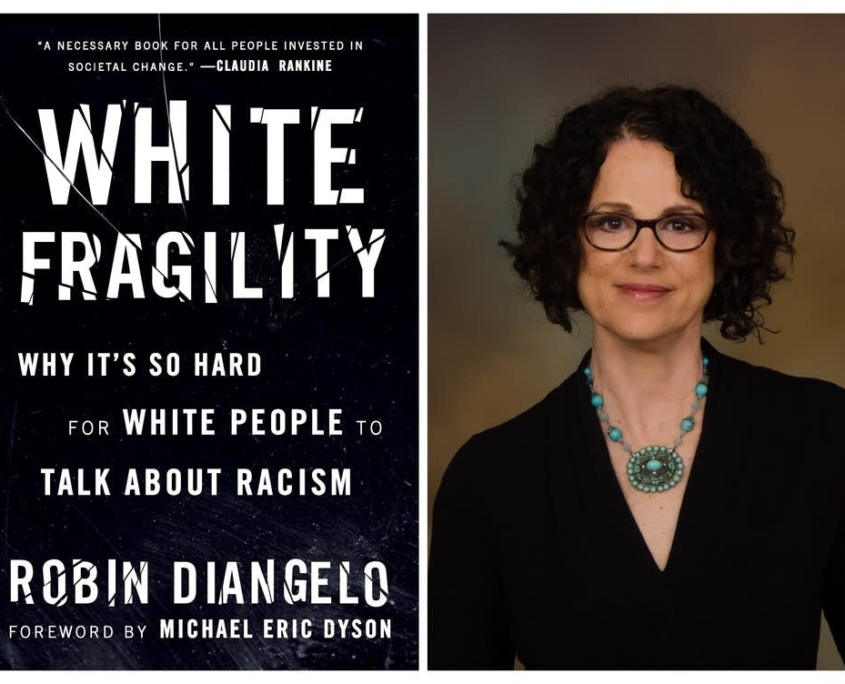












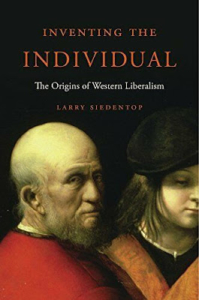
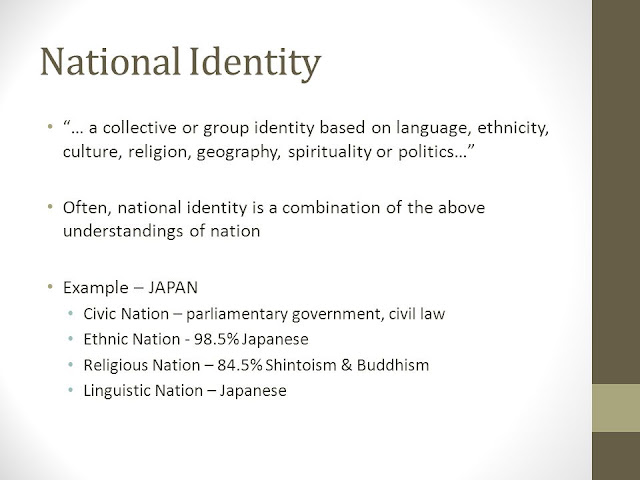





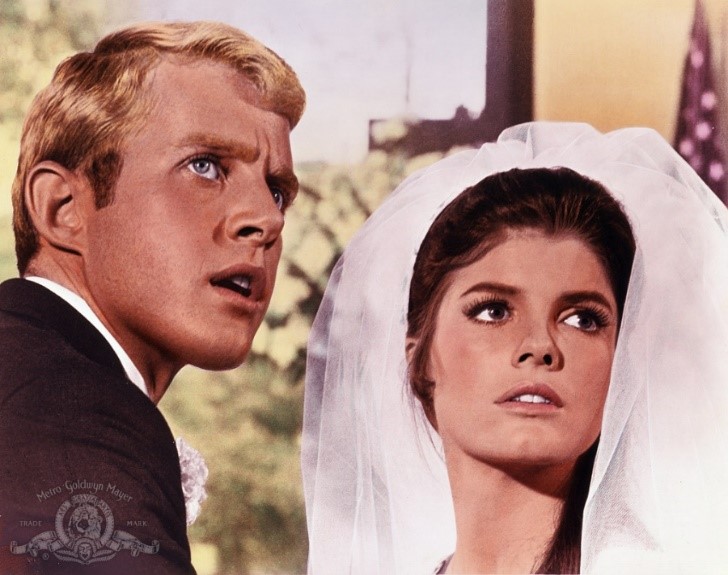
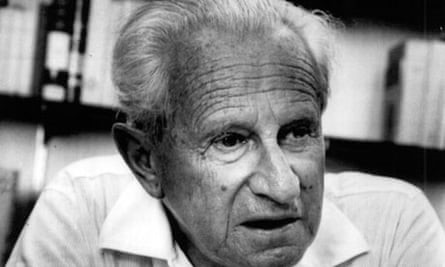
 Of course, the Sacklers and their Purdue executives were not the only demons who facilitated the White Plague. We must not lose sight of the fact that the Jewish-dominated American healthcare system itself, by far the most expensive on earth, is not only failing to halt the precipitous fall of White life expectancy, but is actively fueling the conflagration. The Sacklers are indeed singularly responsible for the White Plague; without their deception, greed, and anti-White animus, it could not have occurred. However, while the Sacklers were certainly the heart (or rather, the gaping black hole where a heart should be) of the Hydra, the Beast had many heads. As Gerald Posner cautions, “By putting the responsibility for the crisis so squarely on Purdue and the Sacklers, there is a risk [that] others who played material roles in creating and feeding the epidemic may not pay a price. That is the hope among thousands of others, sales representatives and executives of rival pharma companies with their own opioid products, overprescribing doctors, FDA bureaucrats who did not want to restrict OxyContin, pharmacists who diverted prescriptions to the black market, and pain management experts who preached that opioids were not addictive when prescribed for pain.” In this respect, the Sacklers appear to be another sacrificial scapegoat for the Jewish ruling class; in other words, the Elders of Zion occasionally sacrifice one of their own for the good of the whole. For example, Bernie Madoff was sacrificed as the avatar for the entire Great Recession. “#MeToo” was created and Harvey Weinstein was sacrificed, in order to further conceal the pervasive pedophilia in Jewish Hollywood. Jeffrey Epstein was suicided, and, though it remains to be seen what will become of Ghislaine Maxwell, she certainly intended to be arrested and thus poses no threat to the System.
Of course, the Sacklers and their Purdue executives were not the only demons who facilitated the White Plague. We must not lose sight of the fact that the Jewish-dominated American healthcare system itself, by far the most expensive on earth, is not only failing to halt the precipitous fall of White life expectancy, but is actively fueling the conflagration. The Sacklers are indeed singularly responsible for the White Plague; without their deception, greed, and anti-White animus, it could not have occurred. However, while the Sacklers were certainly the heart (or rather, the gaping black hole where a heart should be) of the Hydra, the Beast had many heads. As Gerald Posner cautions, “By putting the responsibility for the crisis so squarely on Purdue and the Sacklers, there is a risk [that] others who played material roles in creating and feeding the epidemic may not pay a price. That is the hope among thousands of others, sales representatives and executives of rival pharma companies with their own opioid products, overprescribing doctors, FDA bureaucrats who did not want to restrict OxyContin, pharmacists who diverted prescriptions to the black market, and pain management experts who preached that opioids were not addictive when prescribed for pain.” In this respect, the Sacklers appear to be another sacrificial scapegoat for the Jewish ruling class; in other words, the Elders of Zion occasionally sacrifice one of their own for the good of the whole. For example, Bernie Madoff was sacrificed as the avatar for the entire Great Recession. “#MeToo” was created and Harvey Weinstein was sacrificed, in order to further conceal the pervasive pedophilia in Jewish Hollywood. Jeffrey Epstein was suicided, and, though it remains to be seen what will become of Ghislaine Maxwell, she certainly intended to be arrested and thus poses no threat to the System.



